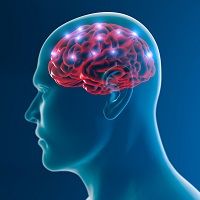Aphasia Post-Stroke Linked to White Matter
Stroke creates language deficits related to brain tissue damaged directly by lesions in cortical and subcortical regions. Disruptions of white matter connectivity also affect multiple domains of behavior and cognition.

Stroke creates language deficits related to brain tissue damaged directly by lesions in cortical and subcortical regions. Disruptions of white matter connectivity also affect multiple domains of behavior and cognition.
Seeking to learn whether residual white matter connectivity independent relates to language deficits after a stroke, a Georgetown University, Washington DC team studied a group of patients with chronic post-stroke aphasia.
In a study reported April 22 at the 2015 American Academy of Neurology annual meeting in Washington, DC, Shihui Xing, MD, PhD, and colleagues compared T1-weighted and diffusion-tensor images (DTI) of 34 post stroke aphasia patients and 28 age-matched controls.
They were given a battery of language and cognitive tests. The team also examined lesion distribution.
“Tract-based spatial statistics and region of interest-wise DTI analyses investigated correlations between white matter integrity and language measures after accounting for lesion volume and location,” they wrote.
Tract-based spatial statistical analysis showed differences in multiple DTI metrics between patients and controls in numerous white matter tracts.
The region-of-interest analysis showed that mean DTI metrics of left external capsule uncinated fasciculus and inferior fronto-occipital fasciculus were significantly related to patients ability to comprehend auditory verbal communication. When the researchers took into account lesion location related to behavioral deficits, correlations between the left uncinated fasciculus and the inferior fronto-occipital fasciculus and auditory verbal comprehension was also significant.
They concluded that secondary white matter damage widely occurs in bilateral hemispheres after left hemisphere stroke.
Further, they said, “white matter disruption in the left hemisphere relates to certain language deficits even accounting for lesion size and location,” a finding that suggests residual white matter connectivity is an important predictor of how well patients will do overcoming post-stroke aphasia.